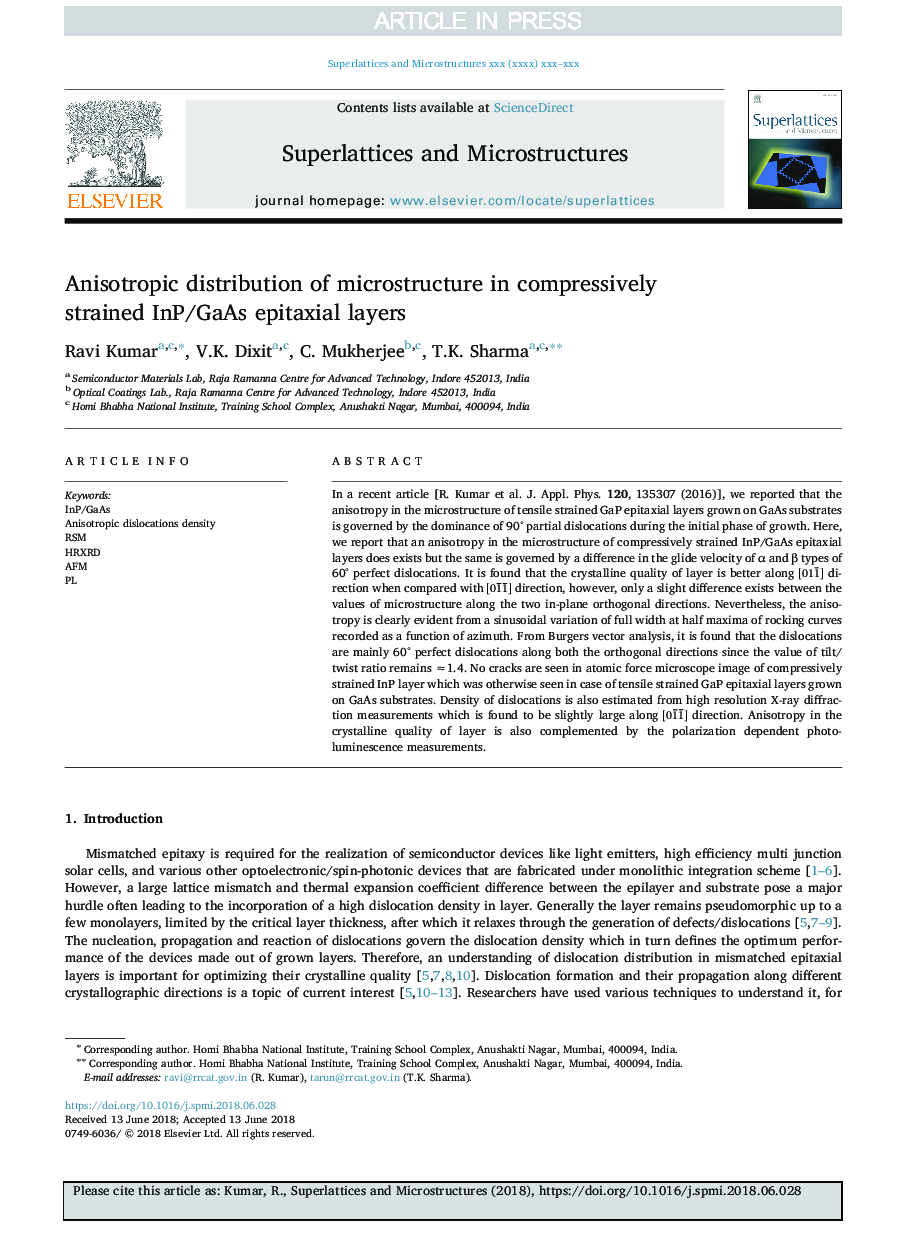| Article ID | Journal | Published Year | Pages | File Type |
|---|---|---|---|---|
| 10155757 | Superlattices and Microstructures | 2018 | 7 Pages |
Abstract
In a recent article [R. Kumar et al. J. Appl. Phys. 120, 135307 (2016)], we reported that the anisotropy in the microstructure of tensile strained GaP epitaxial layers grown on GaAs substrates is governed by the dominance of 90° partial dislocations during the initial phase of growth. Here, we report that an anisotropy in the microstructure of compressively strained InP/GaAs epitaxial layers does exists but the same is governed by a difference in the glide velocity of α and β types of 60° perfect dislocations. It is found that the crystalline quality of layer is better along [011¯] direction when compared with 01¯1¯ direction, however, only a slight difference exists between the values of microstructure along the two in-plane orthogonal directions. Nevertheless, the anisotropy is clearly evident from a sinusoidal variation of full width at half maxima of rocking curves recorded as a function of azimuth. From Burgers vector analysis, it is found that the dislocations are mainly 60° perfect dislocations along both the orthogonal directions since the value of tilt/twist ratio remains â1.4. No cracks are seen in atomic force microscope image of compressively strained InP layer which was otherwise seen in case of tensile strained GaP epitaxial layers grown on GaAs substrates. Density of dislocations is also estimated from high resolution X-ray diffraction measurements which is found to be slightly large along [01¯1¯] direction. Anisotropy in the crystalline quality of layer is also complemented by the polarization dependent photoluminescence measurements.
Related Topics
Physical Sciences and Engineering
Materials Science
Electronic, Optical and Magnetic Materials
Authors
Ravi Kumar, V.K. Dixit, C. Mukherjee, T.K. Sharma,
